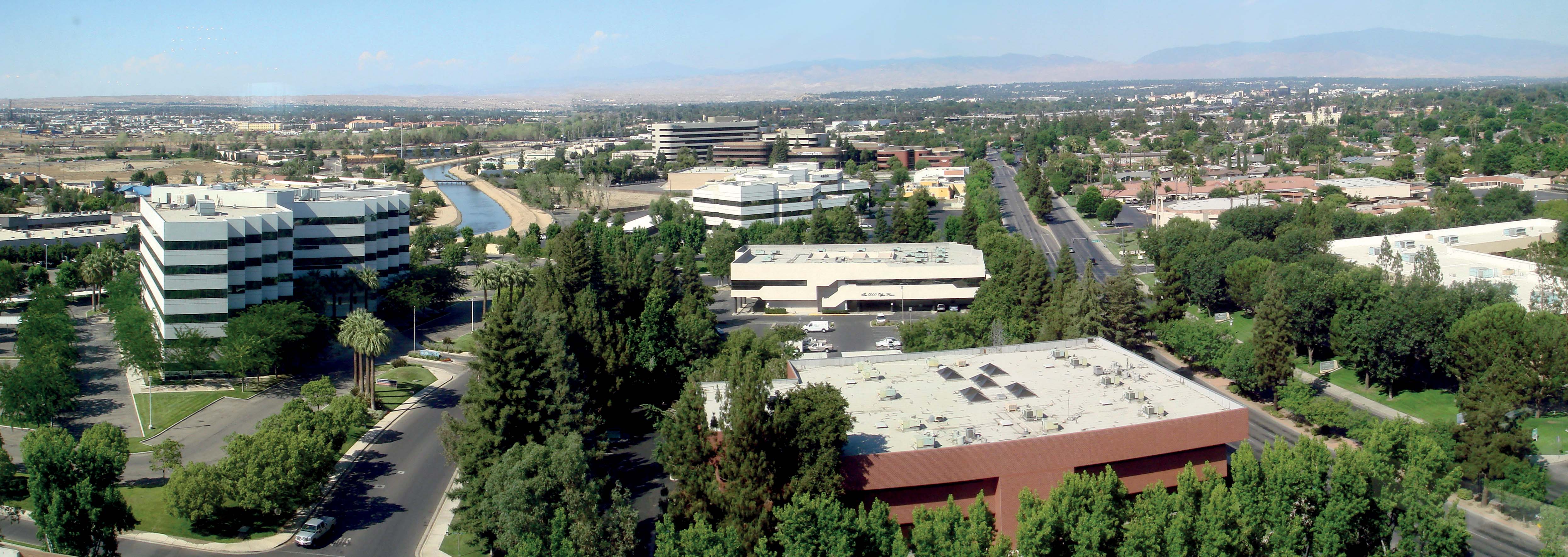
David Crawford reviews a new approach to traffic smoothing.
A key objective for the Californian city of Bakersfield’s upgraded traffic operations centre (TOC), which opened in June 2014, is to help improve living conditions in a region with one of the worst air quality problems in the US. The TOC is speeding up the smoothing of traffic flows by delivering faster and better-informed traffic signal retiming and synchronisation.
Congestion, the city’s sub-regional climate and its topography, combined with a historic lack of traffic routes bypassing the urban core, are all acknowledged as being contributory factors to the city’s environmental plight. Essentially, it sits in a bowl, surrounded on three sides by mountains that trap pollutants, with little in the way of wind to disperse them – which makes the city an ideal test bed for cleaner air initiatives.
Time Magazine recently named it as the ‘real capital of air pollution in the US’. The resulting poor visibility is also a source of road traffic accidents.
As compared with many such centres, the new TOC is a relatively modest installation, essentially a software and locational upgrade of an existing facility. It has just six 50in flat-screen monitors, which are capable of displaying the output from six of the city’s traffic cameras at any one time, or a mixture of live feed and traffic mapping or timing information. “But this is all that we needed,” city traffic engineer Ryan Starbuck told ITS International. The new array is enabling the city’s traffic department, for the
first time, remotely to observe the situation at key intersections and make faster decisions on retiming the signals there to ease flows. Unlike previously, the department no longer has to send members of staff out to check and reset the signals manually.
The previous TOC went operational in the 1990s and the upgrade has cost US$390,000 – nearly 90% of which has come from US Federal Transportation Improvement Program (FTIP) funding.
It has recently acquired 13 pan/tilt/zoom (PTZ) cameras, which are located at major intersections on higher-volume traffic routes and connected to the TOC, and has secured sufficient FTIP funding to pay for eight more during the next two years. The city has also spent US$12.9 million on laying 140km of cable to link signals and cameras.
The new cameras are capable of 360o vision, and operate separately from the city’s red light violation traffic cameras, supplied by Arizona-based
“We’re not trying to catch somebody doing something wrong by using the cameras. This is strictly an issue of traffic, and we’re trying to make it flow as well as we can,” said John Ussery, a civil engineer in Bakersfield’s traffic engineering division. “Safety is a big issue, but another is air quality. When you use the signals to keep platoons of traffic moving, there’s less stopping and accelerating, which is when cars create most of their pollution.” The positive result is that, since June 2014, traffic engineers have the information necessary to retime signals at busy Bakersfield intersections without having to drive out to sometimes distant control boxes. They can also see, with greater clarity on the new monitors, the effects of the retiming.
Starbuck said: “When you’re out in the field, you’re down at traffic level. You can’t see how far away traffic is backing up. But, because these cameras are set up high, they let us look down along the corridor.” Ahron Hakimi, executive director of the
Kern Council of Governments, of which Bakersfield forms part, believes that the role of such TOCs will become progressively more important as cities face hard choices in traffic reduction. “Operational improvements – getting the most out of
existing systems – are what a modern TOC can contribute to, by synchronising signals, introducing ramp meters and just monitoring traffic,” Hakimi said, adding: “We just can’t continue to widen roads to build our way out of congestion.”
At the same time, in the most recent of a series of efforts in synchronising traffic signals, the city has succeeded in cutting CO pollution in the air by an additional 6,350kg per year on top of previous reductions. On the basis of US
Over the same period, fine particulate matter (PM) emissions have fallen by 272kg per year.
In terms of major road links, Bakersfield is served by three freeways, of which state route (SR) 58 extends over the Tehachapi mountains and forms part of the main connector route between interstates I-40 and the fast, north-south I-5, which bypasses the city to the west. Bakersfield remains one of the largest US cities without a direct Interstate link - a matter of continuing political as well as environmental concern at city, county and state level. Work on one planned connection with I-5, an extension to SR 58 named the Centennial Corridor, is due to start in August 2016.
It is being designed with a full array of ITS support technology, with traffic information and management systems and managed freeway operation, including ramp metering.
There are also plans for two beltways; the west could eventually extend to the I-5 and serve as a bypass for the city; while the south would run east-west from SR 58 to the I-5. These will progressively reduce the load on the city’s urban routes, with long-term benefits for its air quality.
The California Department of Transport (
National Environmental Policy Act (NEPA) procedures, for the SR 58 ‘gap’ and beltway operational improvements.
A Caltrans spokeswoman told ITS International: “Good traffic flow helps to reduce negative impacts to air quality. Real-time traffic cameras do assist in mitigating pollution; although the main goal of traffic management systems is to help our roadways work more efficiently and safely.”
Lying at the southern end of the richly agricultural San Joaquin Valley, Bakersfield is the ninth largest city in California, and the core of Kern County, with a population of 839,631, making this the 62nd largest metropolitan area in the US. In a series of suburban expansions over the 40-year period between 1970 and 2010, Bakersfield’s population has soared by 400% (from 70,000 to 347,483), making it one of the fastest growing cities in the state.
Its close proximity to mountain routes, notably the Tejon Pass on I-5 between the Los Angeles metropolis and the central San Joaquin Valley, has made the city a commercial transportation hub. It is a crossroads for shipping goods west to the Californian central coast; south to the major ports in the Los Angeles region; north to San Francisco and beyond; and east to corridors connecting with the rest of the US.
The San Joaquin Valley Air Pollution Control District reports that Kern County has succeeded in reducing its levels of pollution from
stationary sources (including those from the area’s oil industry) by 80% since 1980. But that leaves problems, not least that of the heavy-duty trucks crisscrossing the area with agricultural produce bound for packing sheds.
The city’s economic advantage comes, therefore, at a heavy environmental cost: despite personal finance comparison website NerdWallet rating it seventh among the 10 best US locations for car drivers in June 2014; and an October 2013 listing as second best for rental real estate investment. The American Lung Association’s 2014 State of the Air report puts Bakersfield at number three in a roll call of the worst polluted cities in the US.
Scheduled highway improvement schemes to bypass the city are, therefore, long overdue; with others still only at the planning stage. But local voices are starting to question the long-term value of what they see as apparently open-ended works, citing the prospects of continuous highway construction, long commutes to work and traffic jams. Instead, they are calling for serious consideration to be given to high-speed rail as a long-term solution.









